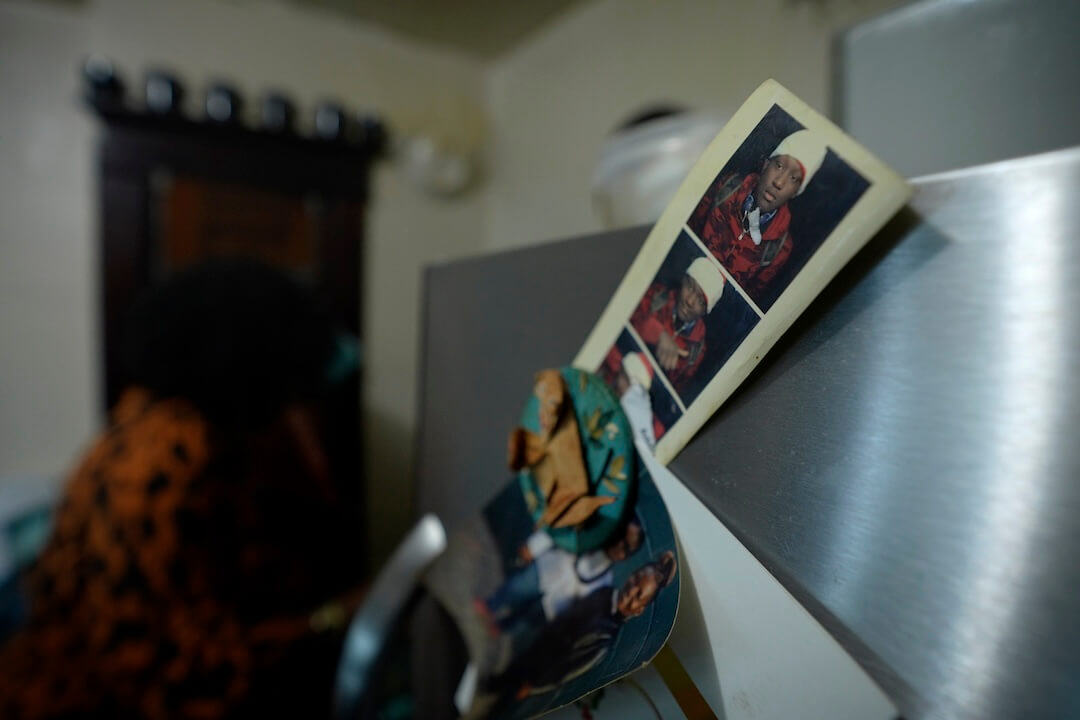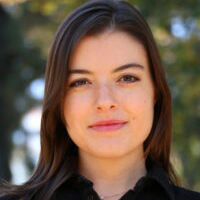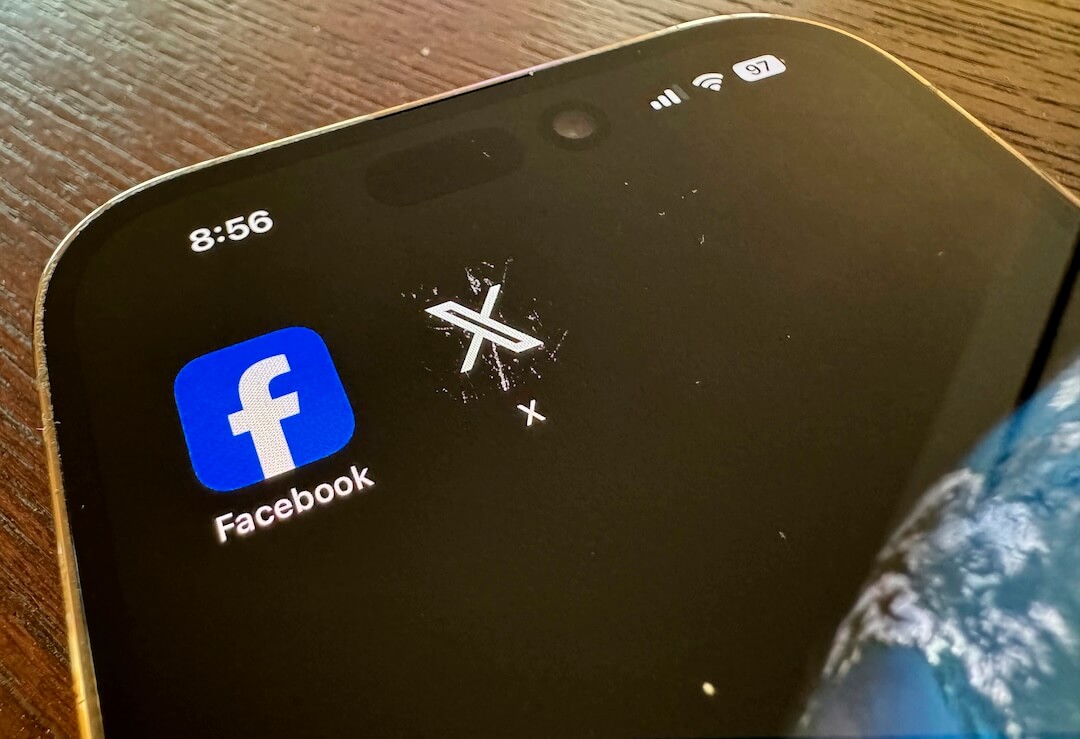When Zeneta Everhart found out that her 20-year-old son was shot while working at Tops Friendly Market in Buffalo, New York, she wailed.
She was at another grocery store in town on May 14, 2022, when her son Zaire Goodman called her cellphone. Zeneta answered, just like she always did when his name flashed on her screen.
“He was screaming, screaming into the phone,” she remembered. “And he said, ‘Mom, get here now. I got shot … through my head and through my body.’ And I just freaked out. And I ran out of the grocery store and I was just screaming.”
Through a haze, Everhart was able to get to the hospital to see her son once he was stabilized. Somehow, despite being shot in the neck, he had survived.
“The doctor said to us basically that Zaire was a miracle,” she said. “The bullet went in and it’s one of those bullets that explodes when it goes inside you. So it exploded, and some of it exited out his back right above his spine. But it missed every major artery, every organ, everything. They said a centimeter up, down, left, or he would not be here.”
So began the long road to physical and mental recovery for Goodman, but soon another blow would come when the family and the world found out that the Buffalo shooter was a white supremacist who specifically set out to murder people of color. Everhart and Goodman are both Black, as were all 10 victims who died in the shooting.
“We need to talk about the fact that we have terrorists in America killing civilians,” Everhart told Poynter. “And so yeah, it should be covered that way. … I get it not putting (the shooter’s) name in there, but on the flip side of that, I want people to know why he did what he did, and that this isn’t just a one-off, right? That has to be the headline: it has to be ‘A Terrorist on American Soil.’ That has to be a headline for me.”
Everhart knows a thing or two about how the media covers shootings; she was a local news producer in Buffalo earlier in her career, and still considers herself a journalist (“It’s in my blood. It’s who I am,” she said).
The evidence on extremist mass shootings in America supports the assertion that the rise and prevalence of far-right shootings is American terrorism. Journalists have a responsibility to provide this context to most accurately tell the story of mass shootings in this country. Without doing so, journalists risk obfuscating the central connection between these shootings, doing a disservice to their readers and viewers.
The Anti-Defamation League released a report earlier this year that showed that “all the extremist-related murders in 2022 were committed by right-wing extremists of various kinds,” with “particular concern” over white supremacists.
This is a relatively new trend, according to the report’s author, Mark Pitcavage, who has been studying extremist murder for 25 years and is now a senior research fellow with the Anti-Defamation League Center on Extremism.
In the “1970s, 1980s, 1990s, (and) 2000s, extremist-related mass shootings did occur, but at a comparatively low level and were fairly steady in that low level,” he said. “But then starting in the 2010s, we really began to see an increase. And the past, particularly since ’15, we have seen a dismayingly high number of them.”
Contrary to popular belief — and often, news coverage — right-wing mass shootings are not simply lone-wolf attacks. Instead, these shooters are actually directly linked to each other and to the larger far-right movement, often in communication with and directly inspired by each other.
“Rather than being isolated loners acting on personal frustration, supremacist-inspired perpetrators are frequently connected in some way to a broader social movement that valorizes violence and calls for the elimination of whole categories of people as a central tenet of its ideology,” wrote Stanislav Vysotsky, a professor of sociology and criminology who researches “accelerationist” white supremacist shooters and the broader far-right movement in America.
“It’s important to understand these as more than isolated events, that this is something that’s part of a wider social movement, that the shooter is linked to people who are part of a wider social movement, and that they’re going to inspire others in that social movement. So we need to be vigilant about the movement that they’re a part of, as much as we are about those kinds of individual actions,” Vysotsky told Poynter.
And journalists need to cover racist mass shootings that way: as a rise in right-wing terrorism in America. That’s not always easy to do, though, especially while many journalists also responsibly avoid naming mass shooters or reporting on details of their lives, so as to not increase the cult of celebrity around them.
“Yet at the same time, if they go too far, they can end up just not shedding any light on the issue for their own audience,” Pitcavage said.
“My thinking is that the best thing to do would be to have a general journalistic principle of not publishing their names, but contextualizing their actions a lot more and better,” Vysotsky said. “And that requires a little bit more legwork — and gets difficult — especially when you’re trying to hit a fast deadline.”
One way to start is with writings that shooters leave behind, a hallmark of far-right shooters. Commonly called “manifestos,” journalism ethics experts recommend reporters refer to the documents as simply “writings” so as not to glorify them. However, experts in mass shootings do often use the word when speaking broadly about such writings. These documents are often posted on right-wing social media or message boards, aimed at an audience of other extremists, and often copy from previous shooters.
“Literally they’re taking passages out of each other’s manifestos,” Vysotsky said. “The manifestos are simultaneously a statement of belief and commitment and an inspiration to others to action.”
As journalist Jeff Sharlet, author of “The Undertow: Scenes from a Slow Civil War,” tweeted after a white supremacist shooting in Jacksonville, Florida, in August, “these killers see themselves as more like a chain letter than lone wolves.”
“In retrospect, it’s like, how come you didn’t see this?” Sharlet told Poynter. “Because when you look on their online life, they were moving toward it with encouragement (with) all those people who are like, yay, and cheering them on.
“And so I think the context of the larger question there then comes to how then do journalists address (the manifestos),” Vysotsky said.
He has a practical tip: Do not quote from the writings.
“Don’t publish the content, even just offhand lines, because that is putting these things out to a wider general audience,” he said. But at the same time, it’s still important to provide the context from the left-behind writings that this is a right-wing white supremacist shooter, if that is the case.
Sharlet agreed, but noted that it’s important for journalists to not stop at just the one shooter’s writings.
“I think if there is a manifesto involved, you got to read a bunch of manifestos. You can’t say, ‘Oh, well I’m covering the Buffalo shooter, so I’ll read that one,’” said Sharlet.
But “the average journalist is certainly not going to have access to (the writings)” or even know they exist, Pitcavage said. It can be especially difficult for local news reporters, he said, who may be covering the first mass shooting in any given community.
“And so they don’t necessarily know the details of other white supremacist mass shootings in the United States or some of the other accelerationist mass shooting events or mass killing events,” he said.
That’s how the problem becomes a vicious circle, and media reports end up often making the shooter seem like lone wolves, just by omission.
To avoid this, experts recommend deferring to people who study this movement extensively. For example, Vysotsky accepts calls from journalists on deadline and can summarize the connections of any given shooting to the larger phenomenon in a single soundbite or quote. This is an easier way for a journalist to include that context without reading white supremacist shooters’ writings themselves.
Beyond writings, though, there are more practical things journalists can do “where you just don’t give gifts to some of these people,” Pitcavage said. “For example, white supremacist accelerationists love images of the killers.” So don’t publish photos of the killer, even mug shots or at court appearances.
This goes beyond images of the killer himself, but also images of any propaganda he has created. For example, the Jacksonville shooter decorated his gun with swastikas and the Buffalo shooter decorated his with “names, slogans, and symbols, including references to white supremacist and racist killers,” according to the ADL.
This is a precise copycat of the shooter who killed 51 people at two New Zealand mosques in 2019.
“On the many firearms he brought with him for the attacks, he decorated them with white paint,” Pitcavage said. “He put all sorts of slogans and symbols and names on them that were symbolically important for him with the idea that others might emulate all these things, and other people have.”
That includes the Buffalo shooter. Not only did he decorate his weapons similarly to the New Zealand shooter, but he also quoted directly from his writings.
“So I think there are judicious things that journalists can do to cover these sorts of events responsibly where they don’t keep their audiences in ignorance, which I don’t think helps anybody,” Pitcavage said. “But at the same time, they don’t needlessly give ammunition to people who obsess over killers or people who want to use those killers to promote and create other killers.”








Please define the terms, “extremist” and “right-wing”. How does the extremist mass shooting by Audry Hale in Nashville who left behind a manifesto fit into the right-wing movement?